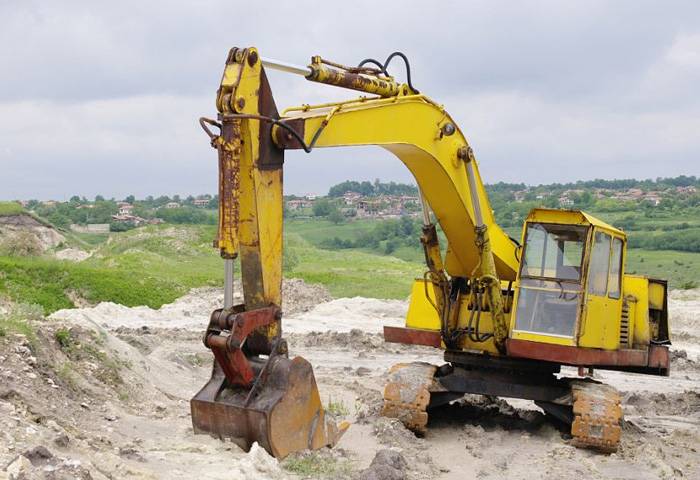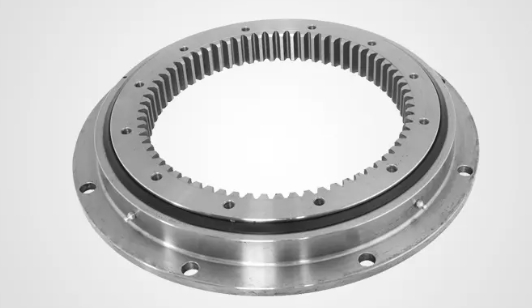
Factors That Need to Be Considered When Selecting the Right Slewing Bearing
2025-02-11
Choosing the right slewing bearing is crucial for the smooth and efficient operation of various industrial applications. This article serves as a comprehensive guide, providing valuable insights into bearing selection and helping you navigate the complexities of selecting the optimal slewing bearing for your specific needs. We’ll explore key factors that need to be considered, from load capacity to environmental conditions, ensuring you make an informed decision. By the end, you’ll be equipped with the knowledge to enhance the performance and longevity of your machinery. This guide is particularly worth reading because it offers practical advice and actionable steps, helping you avoid costly mistakes and optimize your bearing investments.
1. What is a Slewing Bearing and Why is it Important?
A slewing bearing, often referred to as a slewing ring bearing or turntable bearing, is a specialized bearing that accommodates large axial, radial, and moment loads. It enables rotational movement in heavy-duty applications. This bearing design features an outer ring and inner ring, with rolling elements (balls or rollers) in between, and it is a pivotal component in equipment needing smooth and controlled rotational motion.
Slewing bearings are essential because they provide a robust and reliable solution for applications that demand high load capacity and precise rotational control. Think of them as the backbone of heavy machinery. Without them, many critical operations in industries like construction, mining, and robotics wouldn’t be possible. The ability to withstand moment loads and handle various bearing loads makes them indispensable.

2. What are the Different Types of Slewing Bearings?
Understanding the various bearing types is fundamental to bearing selection. Slewing bearings come in several configurations, each designed to suit specific application requirements.
- Single Row Ball Bearings: These are the most common and cost-effective bearing type, suitable for moderate radial, axial, and moment loads. They are often used in light to medium-duty applications.
- Double Row Ball Bearings: These bearings offer higher load capacity than single row ball bearings, making them suitable for heavier applications.
- Single Row Roller Bearings: These offer a greater load capacity and stiffness than ball bearing alternatives, especially for radial loads.
- Double/Three Row Roller Bearings: These are designed for the most demanding applications, offering very high load capacity and resistance to moment loads, such as those found in cranes and excavators.
- Four Point Contact Ball Bearings: These bearings can handle both axial and radial loads, as well as tilting moments. The four point contact design gives them excellent load-bearing capabilities.
- Crossed Roller Bearings: These bearings are designed for applications requiring high accuracy and rigidity. Their crossed roller design provides superior stability.
When selecting the right slewing bearing, it is important to consider your specific load requirements, rotational speed, and environmental conditions. This will help determine which type of bearing is the most appropriate. You should also consider the bearing‘s ability to transmit forces.
3. How to Determine the Load Capacity of a Slewing Bearing?
The load capacity of a slewing bearing is a critical parameter. Understanding how to determine the appropriate load capacity is vital for ensuring the bearing‘s long service life and preventing premature failure.
- Static Load Capacity: This represents the maximum load the bearing can withstand without permanent deformation. The static loads are a primary consideration when the equipment will be stationary, or operating at very low speeds.
- Dynamic Load Capacity: This is the load the bearing can endure for a specific number of rotational cycles. It’s crucial for applications involving continuous motion.
- Maximum Bearing Loads: The maximum bearing loads must also be considered, taking into account any potential for extreme or impact loads.
- Forces Acting: You must carefully assess all forces acting on the bearing, including radial loads, axial loads, and moment loads.
To get a more precise calculation, it is vital to take into account your operating bearing forces. You’ll need to know the weight of the components the bearing supports, any applied external forces, and the geometry of the system. Finite Element Analysis (FEA) or bearing’s rating curve may be needed for more complex applications.
4. How Does Rotational Speed Affect Slewing Bearing Selection?
Rotational speed is a significant factor that impacts slewing bearing selection. As speed increases, so do the demands on the bearing, affecting its performance and longevity.
- High-Speed Applications: For high-speed applications, choose bearings designed to handle elevated speeds, and rotational speed is essential.
- Frictional Resistance: The frictional resistance in a bearing generates heat. Higher speeds produce more heat, which can degrade the bearing‘s lubricant and materials.
- Lubrication: Proper lubrication is essential to reduce friction and heat.
- Service Life: High rotational speed can decrease the bearing‘s service life.
For low-speed applications, less sophisticated bearing designs may suffice. However, for applications with high rotational speed, specialized bearings with enhanced materials, precision, and lubrication systems are required. The rotational speed should be compatible with the specified load capacity.
5. What Role Does Lubrication Play in Slewing Bearing Performance?
Lubrication is a crucial aspect of slewing bearing performance and longevity. It serves multiple functions, all of which contribute to the efficient operation and long service life of the bearing.
- Reducing Friction: Lubrication minimizes friction between the rolling elements and the raceways, reducing heat generation and wear.
- Heat Dissipation: The lubricant helps to dissipate heat generated by friction, preventing the bearing from overheating.
- Protection from Contamination: Lubrication creates a barrier that helps protect the bearing from contamination, such as dirt and moisture.
- Preventing Corrosion: Lubrication helps prevent corrosion by creating a protective layer on the bearing surfaces.
The lubrication type and frequency are crucial. Grease is commonly used for its sealing properties and ease of application. Oil lubrication is often preferred for high-speed applications. Regular lubrication and the selection of the correct lubricant are crucial for optimal performance and extended service life. Consider the operating
environment when selecting a lubricant.

6. How to Choose the Right Seal for a Slewing Ring Bearing?
Seals are critical components of a slewing ring bearing, protecting the internal components from contaminants and retaining lubrication. Selecting the right seal is crucial for the bearing‘s performance in various operating environments.
- Seal Types: Common seal types include lip seals, contact seals, and non-contact seals. The choice depends on the operating conditions.
- Operating Environment: If the operating environment is harsh, with high levels of dust or moisture, a robust seal is required.
- Seal Effectiveness: The seal must effectively prevent contamination from entering the bearing, while also minimizing friction and heat generation.
- Outer Seal: An outer seal helps to prevent contamination, which can lead to bearing failure.
- Coating: Coating can also improve the seal‘s performance, particularly in corrosive environments.
The seal‘s material must be compatible with the lubricant and the environment. Careful consideration of the seal‘s properties is crucial for ensuring the bearing‘s long and reliable service life.
7. How Does the Operating Environment Influence Slewing Bearing Selection?
The operating environment plays a significant role in determining the right slewing bearing and can dramatically impact the bearing‘s performance and service life.
- Temperature Range: The temperature range to which the bearing will be exposed must be considered. High or low temperatures can affect the lubricant and the bearing materials.
- Harsh External Conditions: If the operating environment is subject to harsh external conditions, such as exposure to corrosive substances, water, or abrasive materials, the bearing should be designed with appropriate materials, seals, and coatings.
- Protection from Contamination: The bearing design should incorporate measures to provide protection from contamination, such as effective seals.
- Operating Environment: The operating environment affects the bearing‘s ability to handle the bearing loads.
By carefully considering the operating environment, you can select a slewing bearing that is designed to withstand the specific conditions and provide reliable performance over a long period. Choosing the correct seal and coating is also critical.
8. Why is Material Selection Critical for Slewing Bearings?
The material selection for a slewing bearing is a key factor in its performance, durability, and ability to withstand various operating conditions. The choice of materials impacts the bearing‘s load capacity, wear resistance, and resistance to corrosion and fatigue.
- Raceway: The raceway is the surface on which the rolling elements move. It must be made from a material that can withstand high bearing loads and provide a smooth rolling surface.
- High Loads: For applications involving high loads, high-strength materials such as alloy steels are typically used for the bearing components.
- Corrosion Resistance: For applications where the bearing will be exposed to corrosive environments, stainless steels or special coatings may be necessary.
- Gear Teeth: The gear teeth on slewing rings often use materials like steel alloys for durability. The material must have sufficient gear capacity.
- HRC: Hardness, measured on the Rockwell C scale (HRC), is an important factor for the bearing components. High HRC values are often desirable to improve wear resistance.
Material selection should align with relevant design requirements. The outer ring, inner ring, and rolling elements must be made from materials that can withstand the specific bearing loads and operating conditions.
9. What are the Gear Options Available for Slewing Rings?
Slewing rings can be equipped with various gear configurations, providing the ability to transmit rotational motion and torque. The choice of gear type depends on the application’s specific needs.
- External Gear: An external gear is located on the outer ring of the bearing. It is often used when the bearing is driven by a pinion gear mounted on a separate shaft. This gear is designed to interface with an external drive system.
- Internal Gear: An internal gear is located on the inner ring of the bearing. It is often used in applications where space is limited, and the drive system can be integrated more compactly. This gear is designed for a similar purpose.
- Non-Geared: Some slewing rings are designed without gears. In these cases, the bearing relies on direct forces or other mechanisms to control rotational movement.
- Gear Capacity: The gear capacity of the bearing is a critical factor, and it depends on the size of the gear teeth and the material used.
- Pinion and Gear Location: The pinion and gear location is a critical aspect, which requires precise calculations and design to ensure the gear teeth mesh properly.
- Teeth on the Outer Ring: The teeth on the outer ring are carefully designed.
Consider the required gear capacity, the available space, and the drive system when selecting the right slewing ring gear configuration. Different gear teeth profiles are available to optimize performance.
10. Where Can I Find a Reliable Bearing Manufacturer?
Selecting the right bearing manufacturer is as important as selecting the right slewing bearing itself. The manufacturer’s reputation, experience, and quality control processes directly impact the reliability and performance of the bearing.
- Experience and Expertise: Look for a bearing manufacturer with extensive experience in designing and manufacturing slewing rings.
- Production Capabilities: Ensure the manufacturer has the production capabilities to meet your specific requirements, including custom sizes and designs.
- Quality Control: Verify that the manufacturer has robust quality control processes in place, including material testing, dimensional accuracy checks, and functional testing.
- ISO Certification: Look for a bearing manufacturer that is ISO-certified, demonstrating their commitment to quality management.
- Contact Us: Make sure the manufacturer provides excellent customer service and technical support.
- Service Life: The bearing manufacturer can give valuable insights into the potential service life of their products, based on application parameters.
Xinda Slewing Bearing (https://www.swivelbearing.com/) is a reputable bearing manufacturer specializing in slewing ring bearings and related components. We offer a wide range of products, including single row and double row ball bearings, roller bearings, and customized solutions. We pride ourselves on our high-quality products, competitive pricing, and excellent customer service. For any queries, you can contact us on our website.

Summary:
Here’s a quick recap of the essential points to remember when selecting the right slewing bearing:
- Understand the different bearing types and their suitability for various applications.
- Accurately determine the load capacity requirements, considering axial, radial, and moment loads.
- Factor in the rotational speed, as it impacts bearing performance and service life.
- Prioritize proper lubrication to reduce friction, dissipate heat, and prevent contamination.
- Choose appropriate seals to protect against contamination and retain lubrication.
- Consider the operating environment, including temperature and exposure to corrosive substances.
- Select materials that meet the load requirements, resistance to wear, and corrosion.
- Evaluate the gear options (external, internal, non-geared) to match the drive system.
- Choose a reliable bearing manufacturer with a proven track record of quality and service.
- Ensure the bearing is well-maintained. Maintenance of the bearing is essential for long-term durability.
Contact Us today to learn more about how our slewing bearings can enhance your equipment. We are dedicated to providing you with the best possible solutions.





